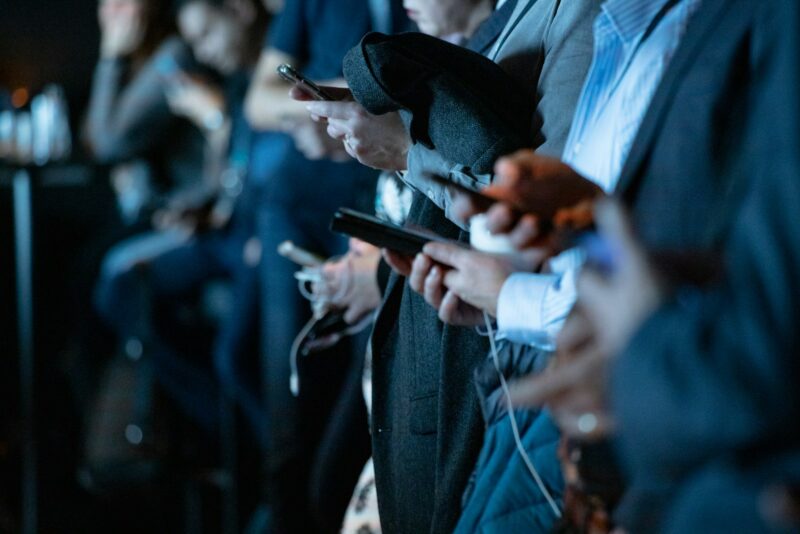Ever feel like your brain has too many tabs open? You’re scrolling through your phone while a show plays in the background, a laptop is balanced on your knees, and you’re half-listening to a conversation. If this sounds familiar, you’re not alone. We live in an era of hyper-connectivity, and our brains are paying the price. The constant pings, notifications, and endless streams of information are rewiring our neural circuits, leaving us feeling anxious, scattered, and mentally exhausted. The solution might be simpler than you think: a digital detox.
What’s Really Happening to Your Brain on Screens?
To understand why a detox is so effective, we first need to look at the impact of constant digital engagement. Our devices are designed to be addictive, leveraging the same neural pathways as slot machines.
- The Dopamine Loop: Every like, share, and notification triggers a small release of dopamine, the “feel-good” neurotransmitter. This creates a reward loop that keeps you coming back for more. Over time, your brain becomes desensitized and requires more stimulation to get the same hit, leading to compulsive checking and a feeling of dissatisfaction.
- Attention Span Under Attack: The rapid-fire nature of social media feeds and news updates trains our brains to seek novelty and switch tasks quickly. This weakens our ability for deep, sustained focus—the kind needed for complex problem-solving, reading a book, or engaging in a meaningful conversation. We’re essentially training ourselves to be distracted.
- Cortisol and a State of “Alert”: Constant connectivity can keep our nervous system in a low-grade state of fight-or-flight. The pressure to be always available and the exposure to stressful news or social comparisons can elevate cortisol levels, the primary stress hormone. This leads to anxiety, irritability, and burnout.
“The cost of a thing is the amount of what I will call life which is required to be exchanged for it, immediately or in the long run.”
– Henry David Thoreau

The Reset Button: What Happens When You Unplug
Taking a deliberate break from your devices—whether for an afternoon, a full day, or a week—gives your brain a much-needed chance to recover and recalibrate. Here’s the magic that happens:
1. Your Focus Returns
Without the constant distraction of a buzzing phone, your brain can rediscover the art of single-tasking. The prefrontal cortex, responsible for executive functions like concentration and decision-making, gets a rest from the chaotic multitasking it’s forced into. You’ll find your ability to concentrate for longer periods improves, and your thoughts become clearer and more organized.
2. Stress and Anxiety Subside
Stepping away from the digital world lowers cortisol levels. You escape the pressure of social media’s comparison culture and the anxiety-inducing 24/7 news cycle. Your nervous system can finally shift from a sympathetic (fight-or-flight) state to a parasympathetic (rest-and-digest) state. This promotes a feeling of calm and well-being.
3. Sleep Improves Dramatically 😴
The blue light emitted from our screens is a notorious enemy of sleep. It suppresses the production of melatonin, the hormone that tells your body it’s time to rest. By putting away screens, especially in the hours before bed, you allow your natural circadian rhythm to take over. The result is often deeper, more restorative sleep, leaving you feeling genuinely refreshed in the morning.
4. Creativity and Boredom Flourish
Boredom is not a void to be filled with endless scrolling; it’s the incubator of creativity. When your brain isn’t passively consuming content, it starts to wander, make novel connections, and engage in daydreaming. This is the mental state where your best ideas are born. A digital detox creates the space for this essential “default mode network” to light up.
How to Start Your Own Digital Detox
You don’t need to go on a week-long silent retreat to reap the benefits. A successful detox is about intention, not duration. Here are some practical ways to begin:
- Start Small: Begin with a “digital sunset.” Designate a time each evening (e.g., 9 PM) when all screens are turned off. Use this time to read a physical book, talk with a loved one, or listen to music.
- Curate Your Notifications: Go into your phone’s settings and turn off all non-essential notifications. Do you really need to know every time someone likes your photo instantly? This puts you back in control, allowing you to check your phone on your terms.
- Declare Tech-Free Zones: Make certain areas of your home, like the bedroom or the dinner table, completely screen-free zones. This helps re-establish boundaries and encourages present-moment awareness.
- Schedule “Unplugged” Time: Plan a weekend day or even just a few hours to be completely offline. Go for a hike, visit a museum, or work on a hobby. Inform friends and family that you’ll be unreachable so you don’t feel anxious about missing something.
- Rediscover Analog: Buy an alarm clock so your phone isn’t the first thing you reach for in the morning. Use a paper notebook for your to-do lists. The physical act of writing can be more mindful and rewarding.
Your Brain Will Thank You
A digital detox isn’t about rejecting technology; it’s about reclaiming your relationship with it. It’s about consciously choosing to be the master of your tools, not the other way around. By stepping back, you give your brain the priceless gifts of rest, focus, and true connection—both with yourself and with the world around you. So, close the laptop, put the phone down for a while, and see how it feels. Your brain is ready for the reset.









